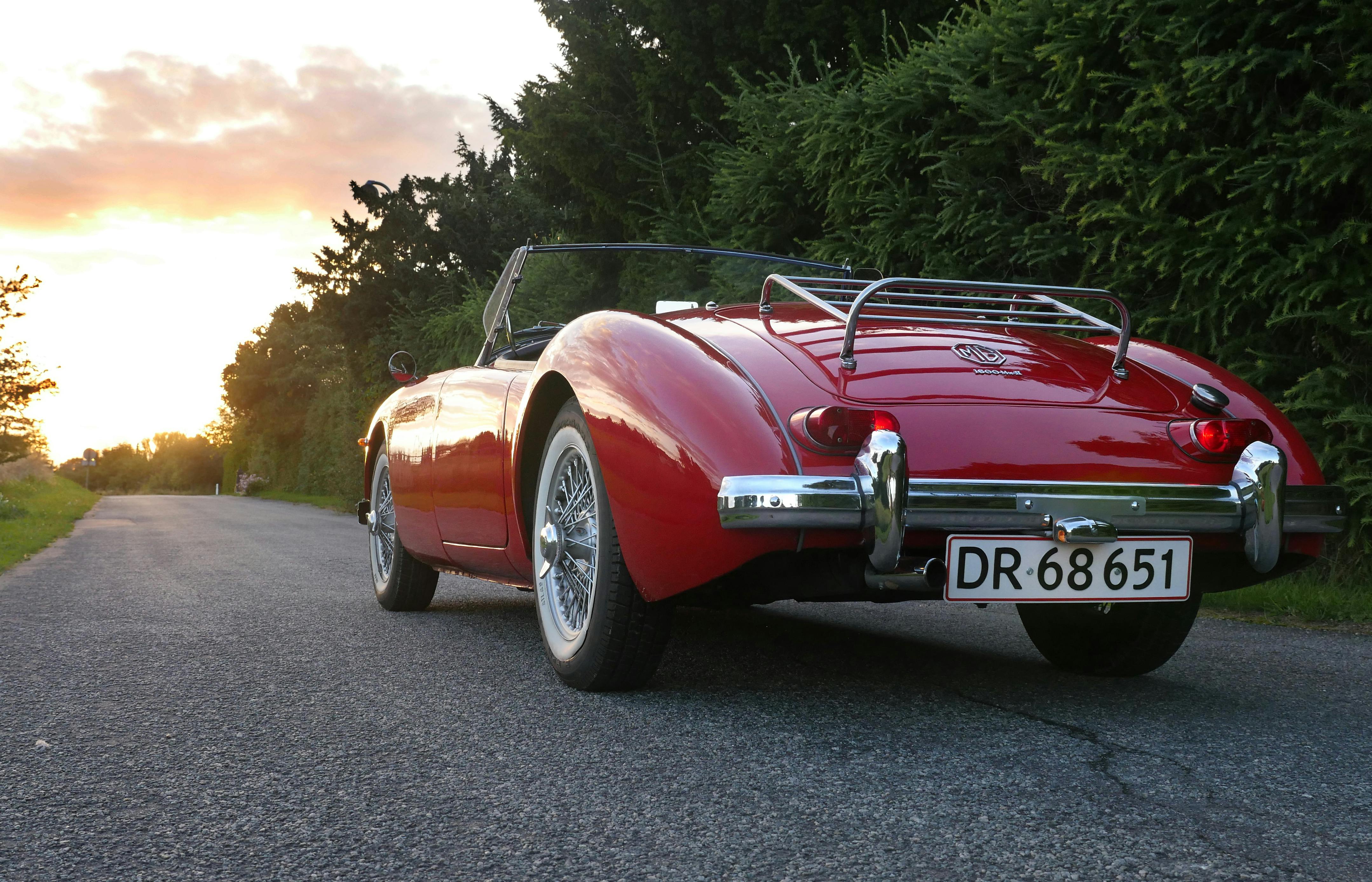Breakdown Cover for Classic and Older Cars: Expert Guide
Find the best breakdown cover for classic and older cars and learn how breakdown cover works from the experts.
Updated:
When you purchase through links on our site, we may earn an affiliate commission. Here's how it works.

Older and classic cars often have a unique charm that makes them stand out on the road. But the same feature that gives them character—their age—also makes them more prone to breakdowns.
Having great breakdown cover ensures you’re not stranded or left out of pocket when something goes wrong with your vintage pride and joy.
In this guide, you’ll get valuable tips on choosing the best breakdown cover for older cars.
Key takeaways
- Classic car breakdown cover is a specialised breakdown policy for older or vintage vehicles, typically defined as 15-20 years old or older.
- Multiple levels of breakdown cover are available for older cars, including roadside assistance, national recovery, home start, onward travel, and European cover.
- Key factors to consider when choosing a breakdown policy for a classic car include coverage flexibility, the provider’s reputation, additional perks, exclusions, and balancing cost vs. value.
- Classic car breakdown cover is often vehicle-based, meaning the policy applies to a specific car rather than the driver.
What is a classic car breakdown cover?
Classic car breakdown cover is a specialist type of insurance designed specifically for classic or old cars.
Remember that the definition of a ‘classic car’ varies among various breakdown cover providers. Some might consider a car a classic if it’s 15 years old, while others expect it to be older, around 20 years.
How does classic car breakdown cover work?
Breakdown cover for classic cars works nearly the same as a standard breakdown cover. The only difference is that it applies specifically to classic cars.
You’ll pay a monthly or yearly premium. In exchange, the provider helps you if your classic car breaks down on the road.
Assistance typically includes dispatching a mobile mechanic to attempt a roadside repair, towing your vintage car to a nearby garage, or covering alternative transportation costs or overnight hotel accommodation if necessary. It all depends on your coverage.

Types of classic car breakdown cover
There are 5 primary levels of breakdown cover for older cars, each offering a different degree of support:
Roadside assistance
Roadside assistance is the most basic form of classic car breakdown cover. If your vehicle breaks down during a journey, a technician will try to fix your car on the roadside. If they can’t resolve the issue, the company pays to tow the vehicle to a nearby garage or back to your home. There’s a distance requirement of about a quarter mile from your home for this level of cover. That means the service person will come out only if you break down beyond that point.
National recovery
National recovery is an upgrade of roadside assistance. In addition to roadside repairs, it includes towing your vehicle to any location within the UK.
Home start
Also known as home assist, home start provides help if your car breaks down or won’t start at home or within a short distance from your home (typically within a quarter mile).
Onward travel
If your car breaks down and can’t be fixed immediately, onward travel covers the costs of continuing your journey via alternative means, such as a hire car or public transport. It can also pay for overnight accommodation while waiting for your car to be fixed.
European cover
European breakdown cover provides help in designated European countries. It includes roadside assistance, towing to a local garage, and, if necessary, repatriating your car back to the UK.
How to choose classic car and older car breakdown cover
Here are some key factors to consider in a breakdown cover comparison of classic car policies and providers.
Coverage options and flexibility
Make sure the policy includes the types of assistance you’ll need based on your travel habits. For example, roadside assistance is usually standard in most providers’ policies. Other coverage types, like European rescue or onward travel, may not be available or only available as optional extras.
If you need more than standard roadside assistance, focus on providers that can customise the policy to your specific requirements.
Providers’ reputation
Read through online customer reviews and testimonials to gauge the provider’s reputation. Focus on feedback about response times, customer service quality, and experience with classic or older cars.
Additional features
Some classic car breakdown policies come with additional perks, such as unlimited call-outs, extended towing distance for roadside assistance, free car health checks, multi-car breakdown cover discounts, and, for European cover, unlimited trips. These perks can significantly increase the value of your policy.
Patrol network size
The size of a provider’s patrol network greatly affects the quality of service you can expect. An extensive network usually means faster response times.
Exclusions and limitations
Review the policy’s exclusions carefully. Some providers may not cover breakdowns caused by pre-existing mechanical issues or wear and tear, which is essential to consider for older cars. In addition, some policies might not apply if your vehicle hasn’t been serviced or maintained according to manufacturer recommendations.
Furthermore, be aware of any limitations, such as mileage, usage, and the number of call-outs per year.
Price and value
Price is essential when choosing a breakdown policy for an older car, but don’t be too fixated on it. The cheapest breakdown cover may not always offer the best value.
To get the most for your money, compare various providers and find a policy that balances cost and coverage. Check that there are no hidden fees or exclusions that could affect the overall value of your plan.
Do I need personal or vehicle cover for my classic car?
Standard breakdown cover is available in 2 primary forms:
- Personal cover applies to the driver regardless of the vehicle they’re driving.
- Vehicle cover is tied to a specific car.
While the former is usually a popular choice for regular cars, it’s less applicable to classic cars. Some providers exclude classic cars from their regular cover. That means breakdown cover for older cars is almost always vehicle-based. In other words, the policy covers a specific vehicle rather than the motorist.
However, personal cover may be an option, especially if you own multiple classic cars. It can provide flexibility, as you would be covered if you break down in any of your vehicles.
Classic car European breakdown cover
If you plan to take your classic car on road trips around Europe, consider getting European cover. Depending on the provider, it may be available as an add-on to your policy or as a standalone policy.
European breakdown cover provides roadside assistance, recovery, and other support services while travelling outside the UK. With it, you can enjoy your trip without worrying about being stranded in a foreign country.
Types of classic car European breakdown cover
There are 2 main types of European breakdown cover for classic cars:
Single-trip cover
A single-trip cover policy provides coverage for a one-off trip to Europe. Coverage typically lasts for the specific trip, with a maximum duration ranging from 1 to 90 days, depending on the provider.
Single-trip cover is usually more affordable than annual cover for infrequent travellers. That said, if you decide to travel again within the same year, purchasing multiple single-trip policies can become more expensive than an annual policy. In addition, coverage is limited to the exact dates of your trip, so any unexpected extensions to your journey may leave you without protection.
Annual cover
Annual breakdown cover offers year-round protection for travels around Europe. If you make multiple trips to Europe within a year, an annual policy is usually more economical than purchasing several single-trip covers.
Remember, each trip is limited in length (usually 30-90 days), and some companies also cap the number of trips you can take each year.
What to consider when choosing classic car European breakdown cover
European coverage zones
Confirm that the policy covers all countries on your travel route, as your coverage might not include all of Europe—some carriers also group nations into zones with differing levels of coverage. Before signing up, confirm the type of coverage and assistance available for each zone.
Multilingual assistance
Breakdowns in a foreign country can be stressful, especially if there’s a language barrier. Look for providers that offer multilingual support or assistance through an interpreter service.
Repatriation services
An important element of European breakdown cover is repatriation back to the UK if your car can’t be repaired abroad. Look for policies with generous repatriation limits or no cap on costs, as transporting cars across borders can be expensive.
FAQs
What defines a classic or older car?
It varies, but for most providers, a car that’s 15-20 years old and above is considered older or classic. Check with a provider to confirm.
Is classic car breakdown cover more expensive than standard cover?
In most cases, yes. Because of their age, classic cars are often more vulnerable to mechanical issues, and parts are often expensive due to scarcity. Comparing quotes from different providers is key to finding the best value.
What does breakdown cover for older cars in Europe typically include?
Breakdown cover for older cars in Europe generally includes roadside assistance, towing services, mechanical repairs, and repatriation if your vehicle can’t be fixed abroad. Some policies offer additional services, such as alternative transport or accommodation, if your car needs extensive repairs.
Is it hard to find breakdown cover for older cars?
Not really. While older cars are more prone to breakdowns, many providers offer tailored policies for older and classic cars.
